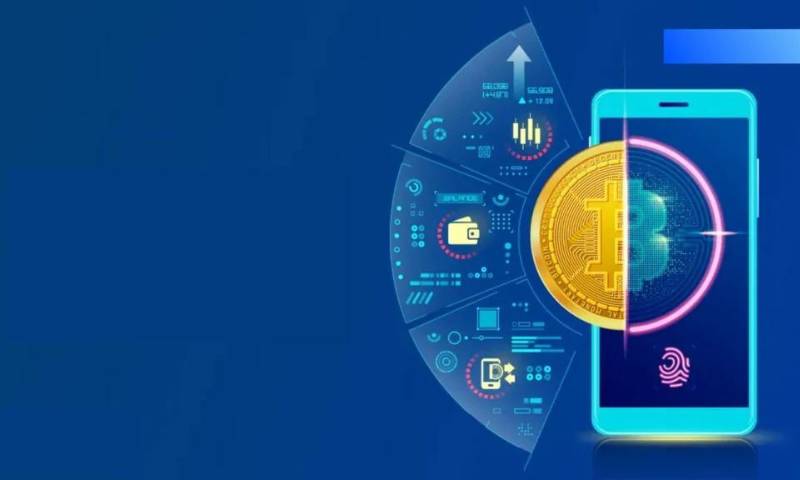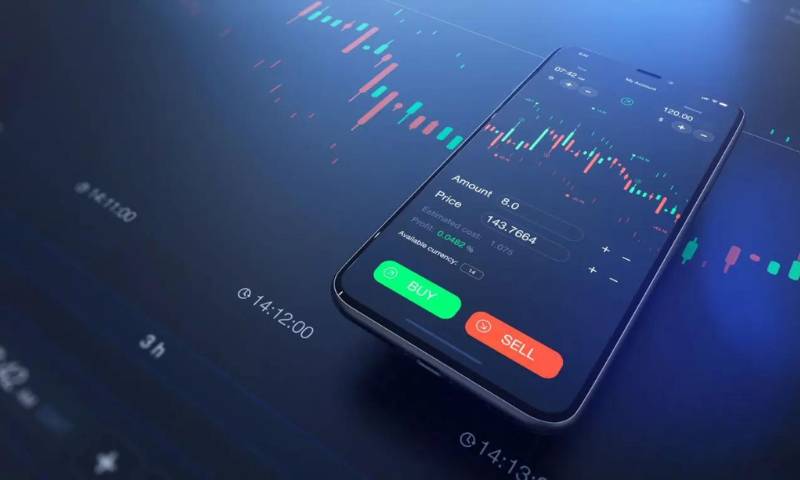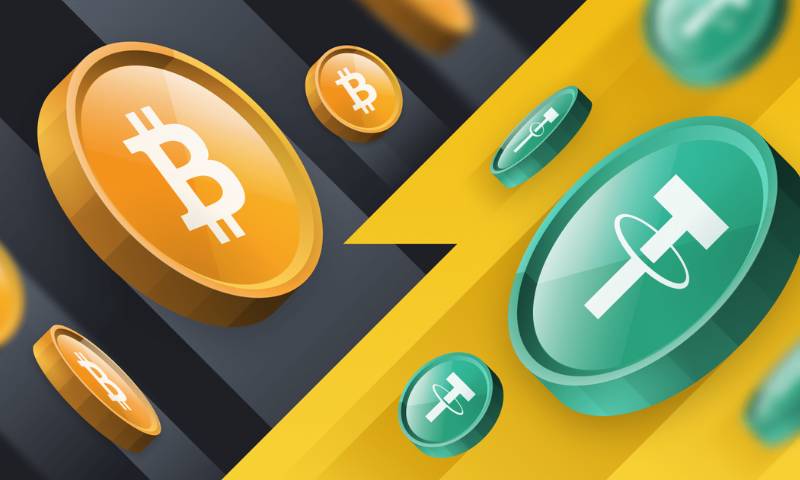Dive into the digital currency universe with ease! Understand the nuts and bolts of understanding different types of crypto tools (wallets, exchanges, analysis platforms) to unlock the real potential of your digital wealth. Curious about how to keep your cryptos safe? Let’s explore hot and cold wallets. Wonder what a multicurrency wallet can do for you? We’ll break it down. Decode the buzz around exchanges and why security is crucial for your trades. Get ahead with top-notch analysis tools that track every move on the blockchain. Master technical analysis to make smart investment choices. Let’s not forget DeFi – find out how to rack up rewards and shield your stakes. Ready to be the crypto savvy you’ve dreamed of? Let’s dive right in!
Exploring the Landscape of Cryptocurrency Wallets
Navigating the Pros and Cons of Hot vs. Cold Storage
Think about crypto storage like your money. Some cash you keep in your pocket. That’s your hot wallet. It’s a software wallet that’s online all the time. It’s easy to use for fast trades and payments. But with being online, there comes a risk. Hackers love to target hot storage. So, what’s cold storage then? Like a safe locked away. Hardware wallets, paper wallets—these are types of cold storage. They hold your crypto offline. So, it’s super tough for thieves to get. But, you can’t trade as fast. It’s all about balance.
Hot vs. cold storage choices depend on how you use your crypto. If you trade a lot, hot wallets make sense. But, back it up. Always. And don’t keep more online than you need. It’s a bit like not walking around with heaps of cash in your pocket. Now, if your crypto’s more like a long-term bet, think cold storage. A hardware wallet’s a small device you can plug in only when you need it. Paper wallets are even simpler. Just pieces of paper with your crypto keys printed on them. But keep them safe—like in a real safe.
Multicurrency Wallets: A Unified Approach to Managing Digital Assets
Now, let’s chat multicurrency wallets. You’ve got more than one type of crypto, right? Instead of having a bunch of wallets, get one that holds many types. These wallets let you keep Bitcoin, Ether, and more all together. It’s way simpler. Plus, you only need to remember one set of login details. Huge benefit!
But not all multicurrency wallets are made equal. Some are for beginners, very easy to use, and some have more bells and whistles. And remember, just like with single currency wallets, backup is key. Picture this: your phone with the wallet goes for a swim. Without a backup? Ouch, crypto’s gone. With a backup? Phew, crisis averted.
Choose a multicurrency wallet that meets your needs. Look for ones that support the coins you like. And check out its backup options. Some let you write down a recovery phrase. Keep that phrase somewhere real safe. It’s like the master key to your digital treasure.
Understanding cryptocurrency wallets isn’t just handy. It can save you from headaches, or worse, lost coins. With the right info and the right tools, you keep your crypto safe and sound. And that’s what being a smart crypto owner is all about.
Delving into Crypto Exchange Platforms
Understanding the Nuances of Centralized vs Decentralized Exchanges
Let’s talk about crypto exchange platforms. You’ve got two main types: centralized (think business with tight control) and decentralized (more like a free-for-all without a boss). What’s the difference? Centralized ones, or CEX for short, are like traditional banks. They have one point of control and your money goes through them. This can make things quicker and they often have better customer service.
Decentralized exchanges, or DEX, work differently. They let you trade directly with others. No middleman means you keep control of your funds during the trade. They’re newer and picking up steam because they offer more privacy and control. But they can be tricky for beginners and might not have as many coin options as CEXs.
“What should I know about CEX vs DEX?” With a CEX, you get more support and typically higher trading volumes. But remember, high volume means lots of activity, it’s not about price. With a DEX, you get privacy and control, but you’ll need to be more crypto-savvy.
Enhancing Security: Measures for Safeguarding Your Trades and Investments
Security is big when trading crypto. Start with a strong password. That’s your first defense. Use two-factor authentication (2FA) too. It’s like having a second lock on your door. For a hardware wallet, which is a physical device, you’re looking at bunkering your digital cash. It’s great for holding crypto long-term. Software wallets are easier for daily use, but not as secure as hardware ones.
Keep backups too. If you lose your device or forget a password, backups save the day. We call this wallet backup importance. It’s like having a spare key to your car. For exchanges, check their security history. Have they had breaches? Do they keep assets in cold storage? That means keeping them offline where hackers can’t get them.
Use exchange fees comparison to find the best deal. Lower fees can mean more money to trade with. For liquidity in crypto markets, think pool size. It’s about how easy you can buy or sell without affecting the price. More liquid equals smoother trades.
Lastly, not all tools are the same. For example, blockchain explorers let you track your transactions live. Portfolio trackers help you see how your investments are doing over time. Remember, whether you choose a CEX or a DEX, it’s about what fits your needs the best. Always keep security in mind and you’re on your way to becoming a crypto pro!
Mastering Crypto Market Analysis
The Role of Blockchain Explorers and Portfolio Trackers
You keep hearing, “Know your crypto tools.” Let’s break that down. First, think of blockchain explorers like super detectives. They dig into every nook and cranny of transactions on the blockchain. Want to know where your Bitcoin’s at? They’ve got the answers. And they’re important because they keep everything out in the open. No secrets in crypto!
Portfolio trackers? They’re your personal finance managers. They watch all your digital coins. Yes, all in one place. Neat, right? They show how your crypto wealth grows or shrinks. This matters because watching your investment’s health shouldn’t be hard. And it’s not with the right tracker. It’s like having a mini-CFO in your pocket that works 24/7.
Leveraging Technical Analysis Software for Savvy Investment Decisions
Now, about making smart choices with your crypto. You want tools that read the market like a book. Enter technical analysis software. This is your crystal ball in the crypto world. It looks at prices and trends. It shows patterns. Why care? Because buying low and selling high is not luck. It’s strategy.
These software programs come loaded with features. They have fancy charts and indicators galore. Think of them as a weather forecast for your coins. Sun, rain, or storm, you’ll be ready. This is key for making decisions that keep your digital wallet smiling. Remember, with great power comes great responsibility. Use these tools wisely!
By mastering these tools, you unlock a world of smart crypto trading. So, get out there and become a crypto detective and a savvy investor today!
Harnessing Decentralized Finance Tools for Asset Growth
Yield Farming and Staking: Tracking and Maximizing Rewards
Picture a garden where you plant digital seeds and watch your assets grow. That’s yield farming. It’s a way to make more crypto with your crypto. You lend or stake your coins on a DeFi platform. In return, you get rewards. These can be more coins or fees from the network. The key to good yield farming: know where and how to plant your seeds.
For beginners, careful tracking is key. You want to see your rewards grow, right? Start with simple staking rewards trackers. Think of them as your garden diary. They help you keep tabs on your progress. Plus, they show you which plants – or in this case, crypto investments – thrive best.
Now, let’s get our hands dirty with staking. It’s like putting your money in a high-interest savings account. You lock up your crypto to support the network. What do you get in return? More crypto! It’s a simple, more passive way to grow your digital wealth.
Yet, always have a plan for backup. What if things go south? Just as you insure your car, insure your investments. Back them up. Write down keys. Double-check security. A locked gate keeps a garden safe – same goes for crypto. Use multicurrency wallet options with good track records and security.
Conducting DeFi Risk Assessments to Safeguard Investments
Even in a digital world, safety first. Can you lose money with DeFi? Yes, if you’re not careful. You need to do DeFi risk assessments. These are like checkups to find holes in your defense. You look at the risks of the platform. Is it built well? Are there bugs? Just as you wouldn’t live in a house with a shaky foundation, don’t trust shaky platforms with your crypto.
Know the platform’s history with exchange security measures. They should have solid walls—ones that hackers can’t easily climb over. Also, check how much money flows through the platform, known as liquidity in crypto markets. More money often means more stability, like a large bank versus a small one.
Stick with platforms that are transparent. They should freely share their security steps and who is in charge. This means using blockchain explorers functions to check transactions and crypto market analysis tools to watch market movements. Smart farmers watch the weather; smart investors watch the market.
Lastly, understand that every garden has weeds. There could be scams or hidden traps in DeFi. Read up and stay informed. Use peer-to-peer trading platforms with caution. Trust what you know and can see. Learn from others.
Investment is like gardening. It takes time, patience, and a bit of risk. But do it right, and you could end up with a bounty. Stay diligent, keep learning, and may your digital garden flourish!
Alright, let’s wrap it up. We had a good look at crypto wallets, both hot and cold, and how multi-currency wallets make life easier. Then, we dug into crypto exchanges and checked out the differences between centralized and decentralized ones. Remember, always keep your trades safe. Knowing how to analyze the crypto market gives you an edge, thanks to blockchain explorers and smart analysis software. Lastly, DeFi tools like yield farming can grow your cash, but don’t forget to check risks.
In short, the crypto world is complex but exciting. Keep these tips in mind and use the tools wisely to make the most of your digital investments. Stay curious, and stay sharp!
Q&A :
What are the key differences between crypto wallets and exchanges?
While both crypto wallets and exchanges are essential for the management and trade of cryptocurrencies, they serve different purposes. A crypto wallet is a digital tool that allows you to securely store, send, and receive various cryptocurrencies. Wallets can be software-based (online, desktop, or mobile) or hardware-based (physical devices). Conversely, a crypto exchange is a platform where you can buy, sell, or trade cryptocurrencies using fiat money or other digital currencies. It acts as an intermediary that facilitates transactions and often provides wallet services, although it’s recommended to use a separate private wallet for enhanced security.
How can analysis platforms improve my cryptocurrency trading strategy?
Cryptocurrency analysis platforms provide a wealth of information that can significantly improve your trading strategies. These tools give insights into market trends, historical data, and real-time analytics, allowing traders to make informed decisions. Some platforms also offer features like sentiment analysis, predictive modeling, and machine learning algorithms that can provide an edge in predicting market movements. By leveraging the tools available on analysis platforms, traders can refine their tactics, recognize profitable opportunities, and mitigate risks.
Why is it important to use a variety of crypto tools rather than relying on one?
Using a variety of crypto tools is important because it enables a more robust strategy for managing and trading your cryptocurrencies. Relying on a single tool or platform can lead to a concentration of risk, especially if that platform faces downtime, security breaches, or regulatory issues. Diversifying your use of wallets can increase security, using multiple exchanges can ensure you have access to the best rates and liquidity, and leveraging different analysis platforms can provide a wider range of data and perspectives, all of which contribute to a more resilient and successful crypto experience.
Can you explain the benefits of hardware wallets for cryptocurrency security?
Hardware wallets are considered one of the most secure types of crypto wallets due to their offline nature, which provides an extra layer of protection against online hacking attempts. They store the user’s private keys in a secure hardware device, making it virtually impossible for remote attackers to access your funds. Transactions can only be done when the device is connected to a computer and physically confirmed, adding an additional security checkpoint. This makes hardware wallets an ideal choice for long-term storage of cryptocurrencies, especially for significant amounts of assets.
What should I look for when choosing a cryptocurrency exchange?
When choosing a cryptocurrency exchange, there are several important factors to consider to ensure a safe and convenient trading experience. First, assess the exchange’s security measures, such as two-factor authentication (2FA), cold storage options, and insurance policies. Additionally, consider the variety and liquidity of available assets, fee structures, ease of use, and customer service quality. It’s also vital to research the exchange’s reputation, regulatory compliance, and whether it’s been subject to any security breaches in the past. Lastly, look for user reviews and testimonials to gauge the credibility and reliability of the exchange platform.






